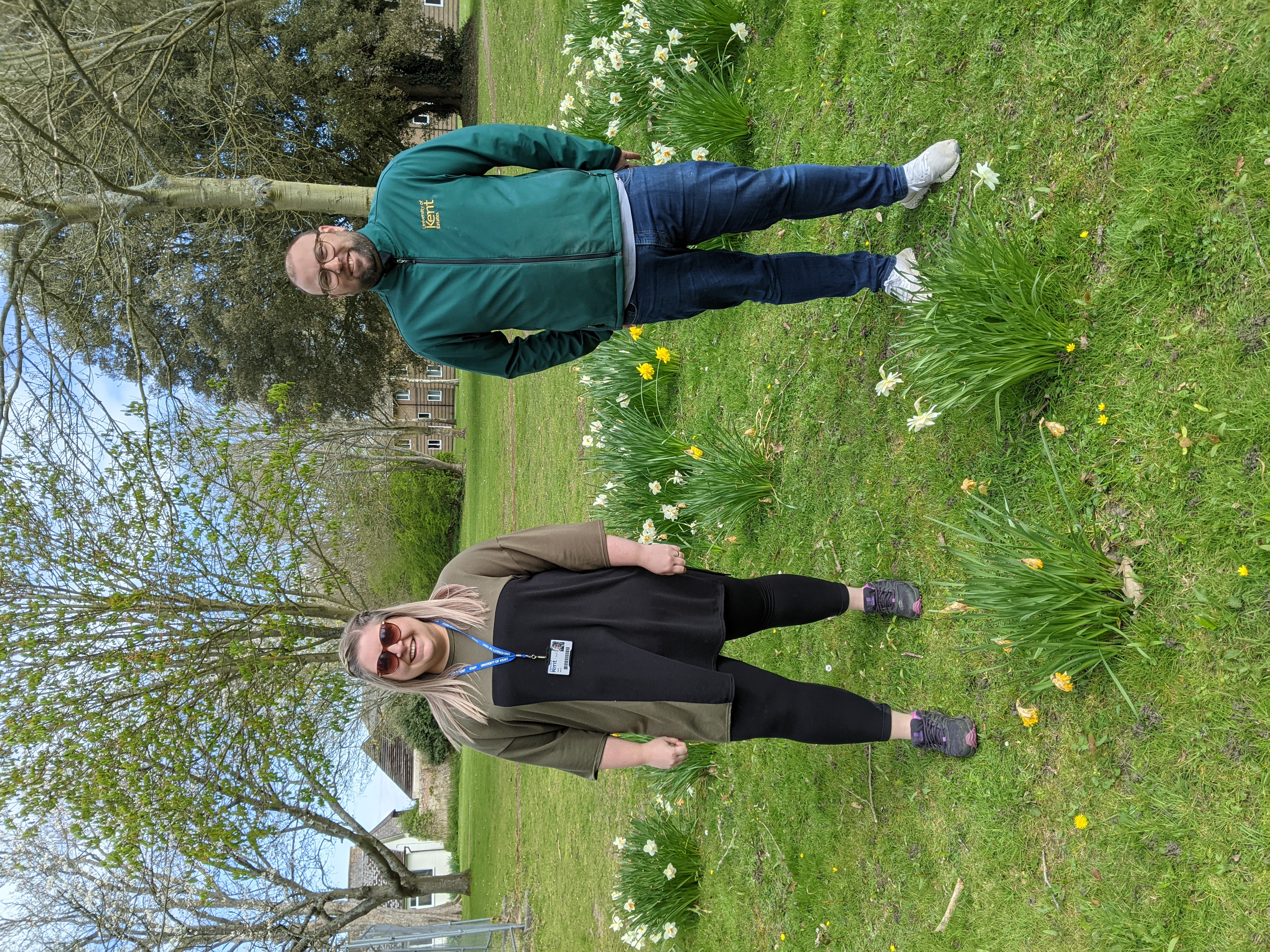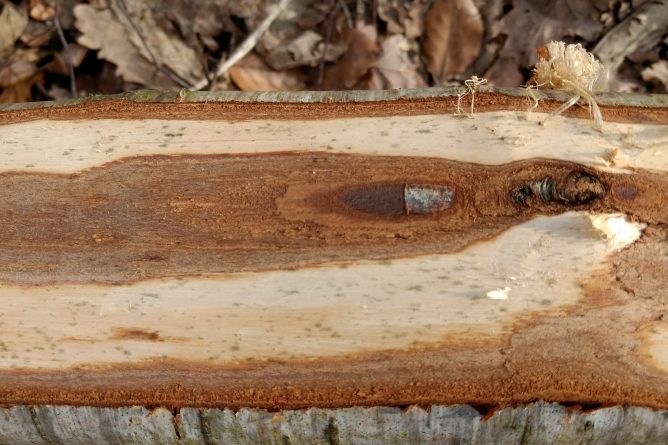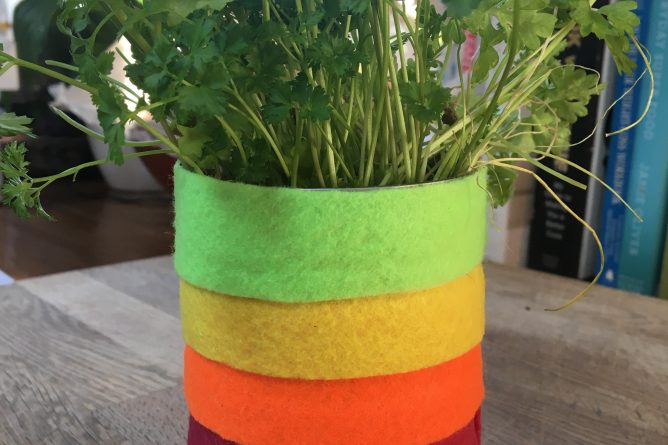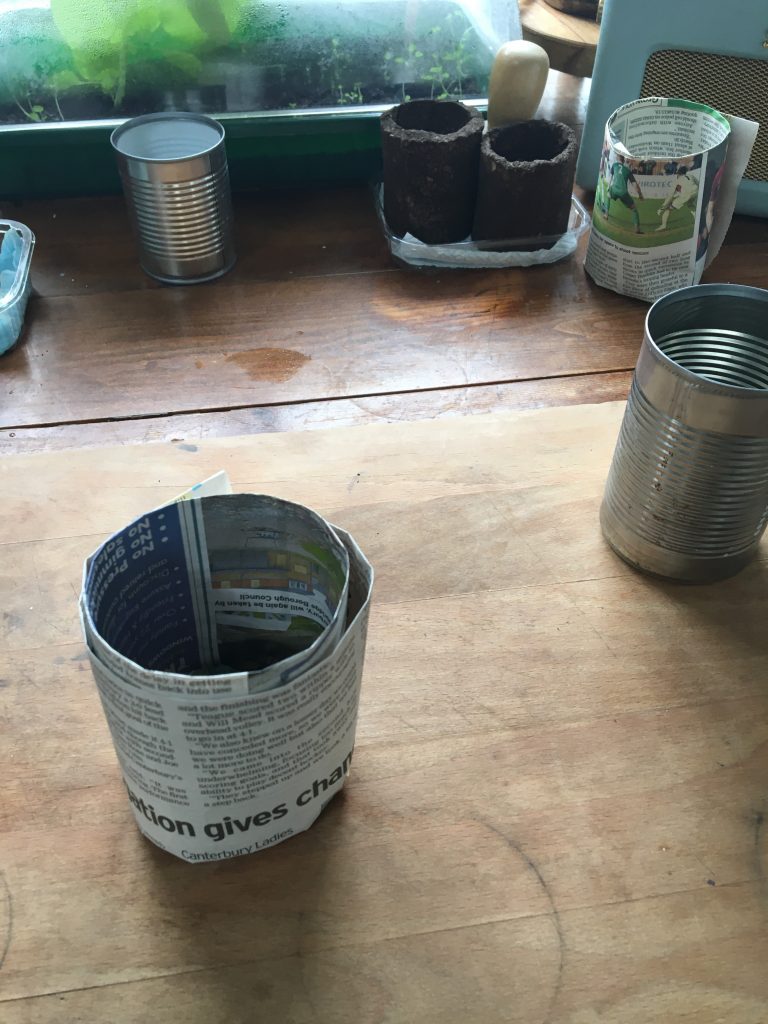By Alice Allwright
Ahead of National Gardening Week 2021 (26 April-2 May 2021) we talk to Chris Wright, the University’s Landscape and Grounds Supervisor, and Emily Mason, Sustainability Coordinator.

Tell us about your roles and a typical day?
Chris: I coordinate maintenance of the University’s natural spaces – everything from grass-cutting, bed and shrub maintenance, to woodland and pond management and looking after memorial trees and benches. I also oversee management of our sports facilities, working with staff and students on projects that use our green spaces.
A typical day starts with briefing my ten-person team on what needs doing across our 300-acre Canterbury campus. My responsibilities include overseeing planning for future works and developing our new Landscape and Biodiversity Strategy. We work alongside the sustainability team to ensure our management plans align with biodiversity enhancement and support natural space for wildlife as well as people.
Emily: I support sustainability projects across our campuses and provide expertise on specific sustainability topics like biodiversity management and behaviour change solutions. One of my projects is the Kent Community Oasis Garden, which I oversee in partnership with East Kent Mind.
Because my role is so varied, I don’t have a typical day, but I often work with our Sustainability Champions, who embed sustainability into their work. Both Chris and I recognise how lucky Kent is to have beautiful campuses for staff and students to enjoy.
Who else is involved in looking after our green campus?
There are many volunteers and sub-contractors who help look after our campus.
Subcontractors support our woodland management by carrying out coppicing rotations on our behalf. Students and staff help with litter picking, biodiversity monitoring, supporting our Hedgehog Friendly Campus project and using the green spaces for educational purposes. Student societies provide feedback and ideas of how we can improve the site alongside the Staff Sustainability Champions network.
We also work with Grounds teams from other universities sharing best practice on sustainable management techniques.
What can you tell us about the Kent Community Oasis Garden (KentCOG)?
KentCOG is a partnership community garden run by East Kent Mind and the University. It recognises the important role outdoor spaces play in supporting good mental health. KentCOG provides a space for students, staff and the community to learn about growing sustainable food in a calming outdoors environment. It runs practical and digital workshops on ecotherapy, dealing with low mood and anxiety.
The partnership ensures continuity throughout the year with community members keeping the garden going when students aren’t on site.
How has the pandemic affected your work?
All Landscape and Grounds staff were stood down during the first lockdown to reduce numbers on campus. This coincided with the start of the growing season, so when we returned we prioritised restoration of central areas.
During lockdown 2, we were partially furloughed again, meaning our usual winter management didn’t happen, but we’ve planned our Winter 2021 programme to catch up by the end of year. Our contractors were able to continue coppicing, so our woodland and tree management plans are still on track.
It’s been hard, but the team have coped very well. We hope people have come to value outdoor spaces even more during the pandemic and will enjoy the campuses’ beautiful landscape when they return.
KentCOG has been closed for most of the pandemic. However, volunteers are now working to restore the site, so we can reopen for events this summer and, hopefully, permanently in September. We have run digital sessions in lieu of practical gardening and will be shortly launching a series of wellbeing workshops for students during the exam term.
As more of us start returning to campus, what can we expect to see?
We’re keen to emphasise the use of outdoor spaces as safe places for staff and students.
We’re collaborating with Kent Sport in restoring the nature trail at Canterbury, which they’ve publicised alongside their marked-out running routes. We’ve also recently installed a new walking trail from the Canterbury campus to the KentCOG following the 17 Sustainable Development Goals, and are developing walking tours led by staff from Landscape and Grounds and the Sustainability Team.
Areas on campus have been marked to be developed as wildflower meadows over the next year. We’ve also commissioned the building of new hibernaculas, providing shelter for important pollinators and other insects. We’ve planted bulbs across 1,000 sq m so people can enjoy seeing new plants popping up over the seasons. Alliums are due next!
We are also hoping to work with the University of Greenwich to enhance green spaces at Medway and create a walking route linking both ends of the campus
How can staff help look after our campus green spaces and the KentCOG?
Staff are invited to complete our consultation on the Landscape and Biodiversity of our campuses – we’re keen to have lots of ideas for our new Landscape and Biodiversity strategy.
Volunteers are welcome at our open sessions at KentCOG. We’ll let you know as soon as we re-open – in the meantime, you can join our mailing list by emailing kentcog@kent.ac.uk.
You can also find out more about what we do and get in touch via our social media accounts:
Sustainability Instagram/Twitter
Landscape and Grounds Instagram/Twitter
This is a repurposed version of a blog post and may differ from the original. View the original blog post.







